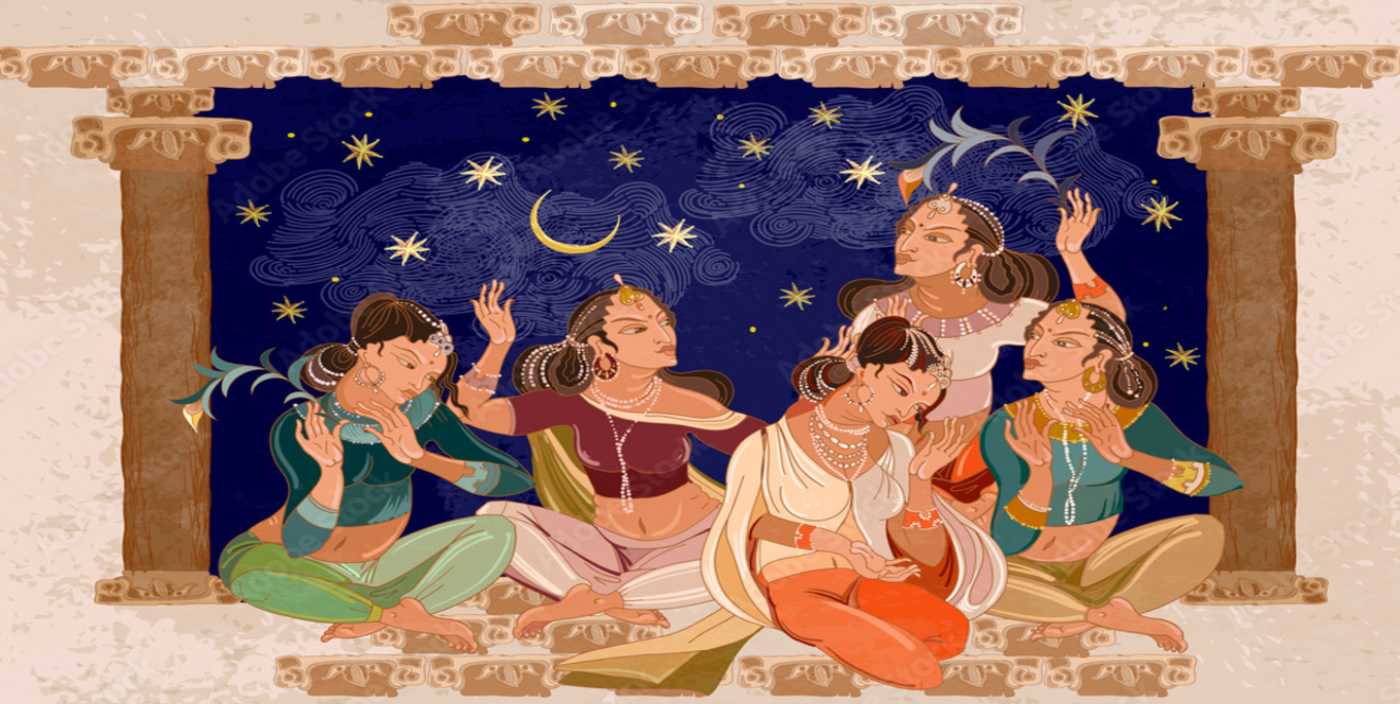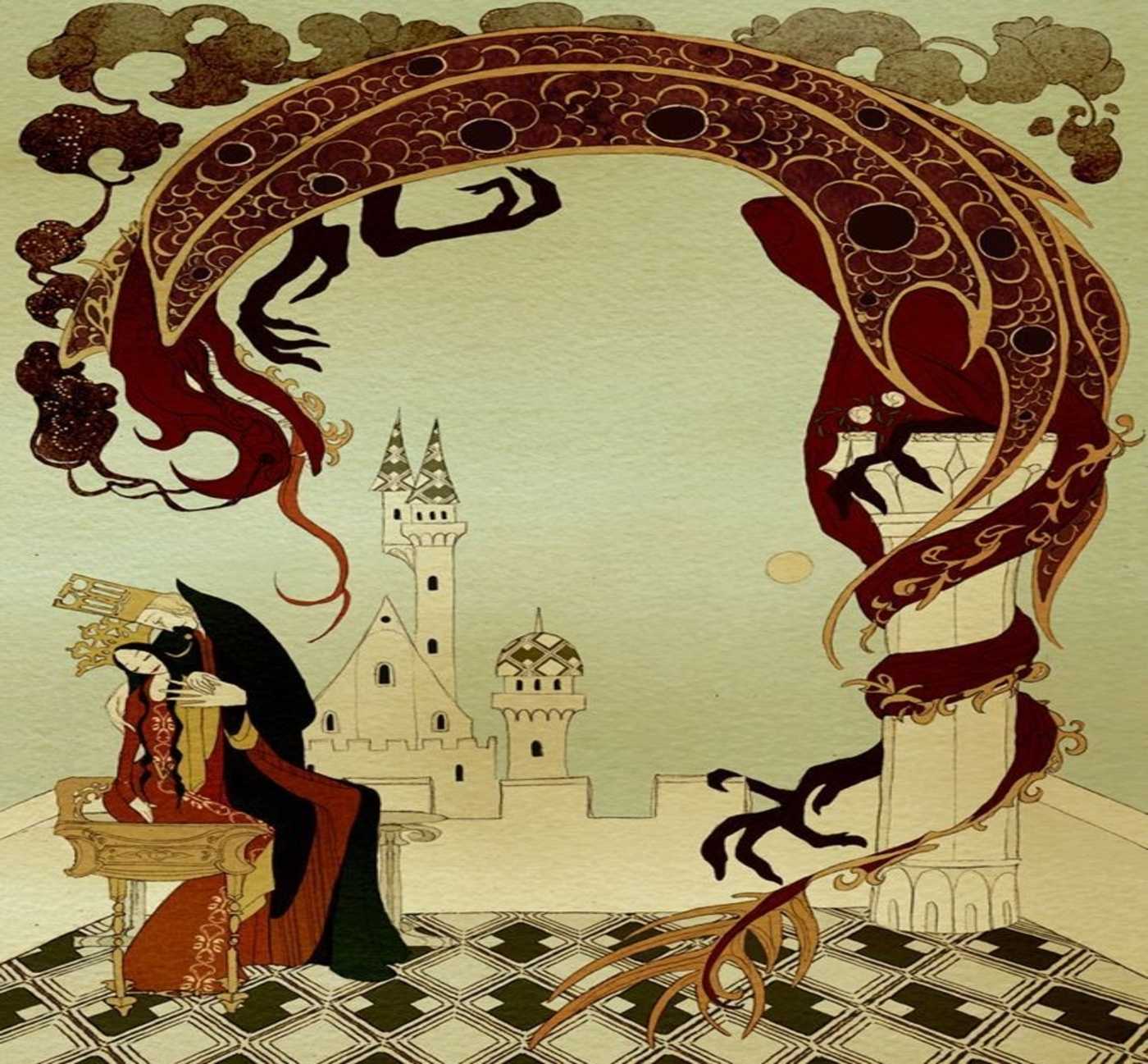Beyond Horizons: Illuminating the Wonders of Asian Folktales

Step into a world where dragons dance across the heavens, spirits whisper through ancient forests, and heroes embark on epic journeys that transcend time. Asian fairy tales, woven with threads of mythology, nature, and moral teachings, stand as captivating windows into the cultural legacies of diverse societies across the continent. From the majestic landscapes of China to the serene cherry blossom groves of Japan and the kaleidoscopic narratives of India, these stories are not mere bedtime tales but rather cultural treasures that have shaped the collective consciousness of generations. In this exploration, we'll unravel the distinctive characteristics that make Asian fairy tales both timeless and culturally resonant, traversing through the realms of filial piety, nature, morality, and the fantastical events.
Asian fairy tales, with their enchanting narratives, have become a profound source of inspiration across various facets of popular culture. In literature, authors like Neil Gaiman and Haruki Murakami draw upon Asian folklore to craft captivating novels that blur the lines between reality and fantasy. TV screens have witnessed iconic adaptations like Disney’s “Mulan” and visionary works such as Hayao Miyazaki’s “Spirited Away,” bringing the magic of these tales to global audiences. Television series like “Avatar: The Last Airbender” and “Once Upon a Time” incorporate elements of Asian mythology, enriching storytelling with diverse influences. Beyond entertainment, the influence extends into fashion and design, with designers like Alexander McQueen and Guo Pei creating couture collections inspired by Asian motifs. Gaming experiences such as “Okami” and adaptations of “Journey to the West” transport players to mythical realms, showcasing the enduring impact of Asian fairy tales on our collective imagination and cultural landscape.

01. Symbolism & Allegory
Colors in Chinese Folklore
Chinese folklore paints with a palette of colors, each imbued with symbolic significance. Red symbolizes good fortune, but it also signifies celebration and happiness. Gold and yellow represent wealth and prosperity, and blue often conveys immortality and spiritual elevation. These colors become threads, intricately woven into the narrative, creating a visual language that echoes cultural beliefs and cosmic forces. In this famous Japanese folktale, the celestial origins of Princess Kaguya are marked by symbolic colors. When the celestial beings visit Earth, they leave behind radiant garments of vibrant hues, including robes of gold and silver. These colors not only signify the otherworldly nature of Kaguya but also convey the ethereal beauty and purity associated with celestial beings.
Cherry Blossoms in Japanese Tales
Beyond their aesthetic appeal, cherry blossoms in Japanese folktales symbolize the ephemeral nature of life. The brief bloom and rapid fall of these delicate flowers become a poignant metaphor for mortality, renewal, and the cyclical patterns of human existence. Cherry blossoms serve as a delicate yet powerful reminder of life’s transient beauty. In the famous Japanese folktale “The Tale of the Princess Kaguya”, the celestial origins of Princess Kaguya are marked by symbolic colors. When the celestial beings visit Earth, they leave behind radiant garments of vibrant hues, including robes of gold and silver. These colors not only signify the otherworldly nature of Kaguya but also convey the ethereal beauty and purity associated with celestial beings.
02. Moral Lessons & Philosophical Reflections
Dharma in Indian Epics
In Indian epics like the “Mahabharata,” the concept of dharma (righteous duty) plays a central role. Characters are often faced with moral dilemmas that force them to contemplate the greater good and the consequences of their actions. These narratives serve as platforms for exploring complex ethical issues, providing readers with profound philosophical insights.
Confucian Values in Korean Tales
A “Confucian” typically refers to an individual or anything associated with the teachings, philosophy, or values of Confucius. Korean folktales often revolve around Confucian values, placing a significant emphasis on family, hierarchy, and social harmony. These stories provide a window into the cultural specifics of Korean society, offering readers a deeper understanding of the principles that shape interpersonal relationships and societal norms. In the Korean folktale “The Woodcutter and the Heavenly Maiden”, a woodcutter saves a wounded crane, which transforms into a beautiful maiden to repay his kindness. The narrative revolves around themes of gratitude, compassion, and the consequences of breaking promises. It reflects Confucian values, emphasizing the importance of virtuous behavior and the reciprocity of kindness.
03. Nature Imagery
Shinto Spirituality in Japanese Landscapes
In Japanese tales, nature is not merely a backdrop but a spiritual force. Shinto beliefs infuse narratives with mystical landscapes, where mountains, forests, and lakes become sacred. This integration of nature reflects a deep reverence for the environment, connecting characters with the spiritual essence of their surroundings.
Sacred Mountains in Chinese Folktales
Chinese folktales often feature sacred mountains, each imbued with mystical significance. These mountains serve as settings for divine encounters, symbolizing the intersection of the mortal and the divine. The narrative unfolds against a backdrop of majestic peaks, evoking a sense of awe and transcendence.
04. Magic Realism & Supernatural Elements
Qi Energy in Chinese Stories
Qi energy is a fundamental concept in traditional Chinese medicine and philosophy, representing the vital life force or energy flow that is believed to animate and sustain all living things. Magic realism in Chinese folktales extends beyond fantastical elements; it becomes a philosophical cornerstone. Characters manipulating Qi aren’t just performing extraordinary accomplishments; they are engaging in a journey of self-discovery and spiritual mastery. The manipulation of Qi serves as a metaphor for understanding and mastering the energies that flow through the universe.
Yokai and Shape-Shifting in Japanese Tales
Japanese folktales are replete with Yokai, mystical creatures that embody nature’s wonders. Shape-shifting fox spirits, or Kitsune, exemplify the magical realism prevalent in these stories. The ability to transform blurs the boundaries between human and supernatural, infusing the narratives with a sense of wonder and unpredictability. One example of a Yokai tale is the story of the “Kappa,” a mischievous water-dwelling creature with a dish-like depression on its head that holds water. Legends tell of Kappa residing in rivers and ponds, challenging humans to sumo wrestling matches and demonstrating both malevolent and benevolent behavior based on human interactions. The tales often emphasize the importance of politeness and respect to avoid falling victim to the Kappa’s tricks.
05. Cultural Specificity
Tea Ceremonies in Japanese Culture
Japanese folktales often incorporate the intricacies of tea ceremonies, showcasing cultural nuances. These ceremonies are not merely rituals but reflections of values such as harmony, respect, purity, and tranquility. Through these details, readers are immersed in the subtleties of Japanese customs, adding authenticity to the storytelling.
Filial Piety in Korean Narratives
Beyond a simple adherence to filial piety, Korean folktales delve into the complexities of familial relationships. Characters navigate the tensions between duty and personal desires, painting nuanced portraits of the sacrifices and struggles inherent in upholding Confucian values. One example is the Korean fairy tale “The Tale of Shim Cheong.” In this story, Shim Cheong sacrifices herself to the sea to restore her blind father’s eyesight. Her selfless act is driven by her deep sense of filial duty, showcasing the cultural value of honoring and caring for one’s parents even at great personal cost.
06. Episodic Storytelling
Journey to the West and Episodic Adventures
“Journey to the West” unfolds as an epic mosaic of episodic adventures, each contributing to the overarching narrative while standing as a self-contained story. The diversity of mythical beings, moral challenges, and fantastical encounters provides readers with a multifaceted exploration of the characters’ journey, adding depth and complexity to the storytelling.
Fables and Talking Animals in Indian Narratives
Indian fables, often featuring talking animals, go beyond moral instruction. The choice of animals is deliberate, with each species embodying specific qualities. The cleverness of a crow or the wisdom of an elephant become metaphors for human virtues and vices.
07. Clever Plot Devices
Magical Objects in Japanese Tales
Magical objects in Japanese folktales serve as keys to unlocking mysteries and transcending the ordinary. An example of a magical object in Japanese tales is the “Uchide no Kozuchi,” which translates to “The Mallet of Luck” or “Magic Mallet.” This magical hammer is often featured in folktales and is said to have the power to grant wishes or bring good fortune. According to the legends, when you tap the Uchide no Kozuchi on an object or person, it can transform them into something else or fulfill a desire. The tales often revolve around characters who come into possession of this enchanted mallet and the various adventures or lessons that result from its magical abilities.
08. Cyclical Time & Reincarnation
Reincarnation in Hindu-Influenced Narratives
Hindu-influenced stories often explore the cyclical nature of time and reincarnation. Characters undergo multiple lifetimes, each contributing to their spiritual evolution. This cyclical time structure reflects the broader philosophical concept of the eternal cycle of creation, preservation, and dissolution.
Karma and Consequences in Indian Tales
Indian folktales frequently incorporate the concept of karma, where characters’ actions lead to consequences in this life or the next. The notion of cause and effect shapes the narrative, emphasizing the interconnectedness of individual choices and the unfolding of destiny. An example of karma is the story of “King Harishchandra.” Harishchandra, known for his unwavering commitment to truth and righteousness, faces numerous trials as a result of his adherence to dharma. He loses his kingdom, family, and wealth but remains steadfast in upholding honesty and virtue. Eventually, his steadfast commitment to truth is rewarded, and he regains his kingdom, highlighting the enduring influence of karma and the belief that virtuous actions yield positive outcomes in the long run.
End Note
Asian folktales, through these examples, showcase the depth and complexity of their storytelling. These narratives go beyond simple tales; they are cultural artifacts, philosophical inquiries, and windows into the intricacies of Asian societies.
With rich symbolism, moral lessons, nature imagery, and supernatural elements, Asian folktales continue to captivate readers worldwide, offering glimpses into the profound wisdom and timeless storytelling traditions of diverse cultures.




